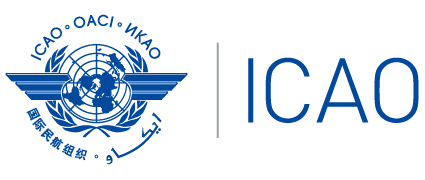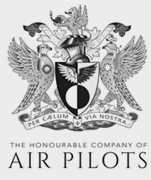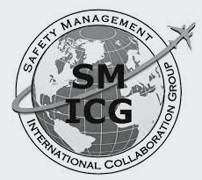CRJ9, San Diego CA USA, 2021
CRJ9, San Diego CA USA, 2021
Summary
On 29 October 2021, a Bombardier CRJ900 lined up and began a night takeoff at San Diego aligned with the left runway edge lights instead of the runway centreline damaging both edge lights and the aircraft wing and landing gear. The pilots stated they had been unaware of their error until aircraft damage was found after landing despite returning to the runway after about a third of their takeoff roll. This apparent conflict between the crew statements and the evident aircraft realignment was not considered by the Investigation but subsequent minor modifications to related operator runway line-up procedure were noted.
Event Details
When
29/10/2021
Day/Night
Night
Flight Conditions
On Ground - Low Visibility
Flight Details
Aircraft
Operator
Type of Flight
Public Transport (Passenger)
Flight Origin
Intended Destination
Take-off Commenced
Yes
Flight Airborne
Yes
Flight Completed
Yes
Phase of Flight
Take Off
Location - Airport
Airport
General
Tag(s)
CVR overwritten
HF
Tag(s)
Ineffective Monitoring
RE
Tag(s)
Misaligned take off
Outcome
Damage or injury
Yes
Aircraft damage
Minor
Non-aircraft damage
Yes
Non-occupant Casualties
No
Off Airport Landing
No
Ditching
No
Causal Factor Group(s)
Group(s)
Aircraft Operation
Safety Recommendation(s)
Group(s)
None Made
Investigation Type
Type
Independent
Description
On 29 October 2021, a Bombardier CRJ900 (C-GJZV) being operated by Jazz Aviation on a scheduled international passenger flight from San Diego to Vancouver as JZA767 was unintentionally aligned with the runway edge lights for a night takeoff in reduced but not significantly forward visibility and took off on that alignment without either pilot recognising the error at the time or once airborne. After its subsequent landing, it was found that one of the two left main gear tyres was deflated and damaged and that the lower surface of the left inboard flap had been punctured in two places.
Investigation
The Investigation was delegated to the Canadian Transportation Safety Board by the NTSB. The FDR and CVR were both removed from the aircraft and their data were successfully downloaded. However, whilst the FDR provided useful data, relevant data was not obtained from the 2 hour CVR as it had not been electrically isolated until approximately 4 hours after the aircraft landed.
The Captain had a total of 24,826 hours flying experience including 11,517 hours on type. The First Officer had a total of 20,213 hours flying experience including 7,157 hours on type. Both pilots had been employed by Jazz Aviation for several years and had flown together “numerous times”. Both pilots had previously flown the Vancouver-San Diego route regularly, sometimes together and were therefore very familiar with San Diego.
The flight involved was the return leg of a flight from Vancouver to San Diego and taxied for takeoff just under an hour after arrival. The single runway airport was busy and it was half an hour after the taxi out began before full length line up approval on runway 27 from the beginning of the displaced landing threshold was given with the prevailing visibility from the beginning of the 2,865 metre-long, 60 metre-wide runway being in excess 800 metres.
Once given a Line Up and Wait clearance, the Captain taxied the aircraft across the holding point on the taxiway centreline before making a very minor deviation from the lead on line in order to marginally increase the available TORA. However, on seeing the lit runway edge line a few seconds later, he then immediately turned sharp left onto it and stopped (see the illustration below). This shows that the very small deviation made increased the takeoff run available by around 40 metres - from 2,725 metres to 2,765 metres
Meanwhile, the First Officer, who was the designated PF for the takeoff, was completing the Before Takeoff and Line-up Checks and then receiving and reading back the takeoff clearance. The Captain then passed control of the aircraft to the First Officer who, like the Captain, did not recognise the runway edge line up, and they commenced the takeoff roll. The left main gear initially struck and damaged three consecutive runway edge lights and both pilots “heard sounds and felt vibrations”, but stated that they had thought they were rolling over embedded runway centreline lights. However, they then stated that “around this time”, the First Officer “visually identified the misalignment with the runway” and had begun corrective action to reach the runway centreline. By the time the aircraft crossed the runway’s displaced threshold - 550 metres from the start of the runway - it was 12 metres from the runway edge but still 18 metres to the left of the centreline and remained on that track until rotation began after a takeoff roll of approximately 1,420 metres just over half way along the available runway length.

The ground track of the aircraft as it lined up on the runway edge. [Reproduced from the Official Report]
The subsequent discovery of the debris of three destroyed edge lights was not discovered until almost eight hours later during a routine nightly inspection at which point they were replaced. Puncture damage to the underside of the left wing and deflation of one of the two left main gear tyres was not found until the aircraft landed after its unrelated en-route diversion.
The following Findings were formally documented based upon completion of the investigative work:
Causes and Contributing Factors
- The aircraft was operating at night and in fog, in an area where visibility was between ¼ statute mile and ½ statute mile. As a result, there were few visible cues available to the flight crew to identify and verify the aircraft’s position on Runway 27 at San Diego International Airport. (Editors Note: The above text refers to “an area” where visibility was reduced as then stated, but the substantive content of the Investigation Report does not support the inclusion of the actual visibility where the misalignment occurred as a cause or contributing factor.)
- When taxiing to position on the runway, the Captain taxied the aircraft off the taxiway centreline in order to increase the runway distance available for takeoff. As a result, he had to rely on other visual cues to determine the aircraft’s position on the runway.
- When the aircraft was turning left to establish the runway heading in preparation for takeoff, the limited and ambiguous visual cues that were available likely met the Captain’s expectations. As a result, he perceived the left runway edge as the runway centreline and aligned the aircraft laterally with the left edge of the runway, rather than its centre. (Editors Note: The Investigation Report states visibility along the runway at that point was not less than 800 metres and provides no evidence that “limited and ambiguous visual cues” prevailed.)
- The complexity of instrument flight rules operations on a single runway surface, with arrivals on one end and departures from the other end, created an environment where the flight crew perceived a time pressure for the takeoff. As a result, the First Officer was completing the line-up checks while the Captain taxied into position and the First Officer therefore did not monitor the progress of the taxi.
- Due to the reduced visual cues and perceived time pressure felt by the First Officer, he did not recognise that the aircraft’s nose was aligned with the left edge of the runway when he assumed the role of pilot flying shortly before the take-off roll commenced.
- During the take-off roll, the aircraft’s left main landing gear wheels contacted and severed 3 runway edge lights, causing damage to the aircraft’s tyres and flaps.
- The aircraft’s contact with the runway edge lights was not recognised by the flight crew because they perceived the sounds and vibrations to be normal contact with the embedded runway centreline lights and consequently continued with the departure. (Editors Note: The Investigation Report does not include any evidence that the pilots “perceived” the sounds and vibrations to be normal contact when this observation can only be based on subsequent pilot statements)
Risk Factors (Safety deficiencies which were assessed not to have been a factor in this occurrence but could be in future ones)
- If flight crews line up on runways in the area before the displaced threshold or conduct intersection departures under degraded visual conditions or at night and without confirming the aircraft's lateral position on the runway, there is an increased risk of runway misalignments or runway side excursions.
- If foreign object debris on runways is not detected and identified in a timely manner, there is a risk that it will result in aircraft damage during critical phases of flight.
Safety Action taken by Jazz Aviation as a result of the event was noted at the conclusion of the Investigation as having included the following:
- Reviewed all 76 airports on its North American network, identified those which it considered required risk mitigation due to address the presence of displaced runway thresholds and added corresponding departure considerations to the relevant chart displays.
- Amended the OM ‘Line Up Check’ to require both pilots to verify correct presence the departure runway by reference to the painted runway surface identifier, the aircraft position by reference to the taxi chart or its position on the airport moving map display in the Jeppesen app.
Editor’s Note: After becoming airborne unaware that they had just taken off only partly on the runway, a subsequent and entirely unrelated fuel imbalance developed with inappropriate management of it resulting in a necessary off-route diversion. As both events occurred during the same flight, the separate investigations of both events were published in a single report. A concise summary of the other event is provided separately here.
The Final Report of the Investigation was authorised for release on 22 May 2024 and officially released on 5 July 2024. No Safety Recommendations were made.






